With over 26 years of experience in visual effects (including 21 at ILM), Todd Vaziri has a large number of films in his filmography including War of the Worlds, Transformers, Avatar and the latest Star Wars trilogy.
How familiar were you with D&D prior to working on this film?
I actually worked on the Dungeons and Dragons movie back in 2000!
How was the collaboration with the directors and VFX Supervisor Ben Snow?
The great news is that our very own Ben Snow was the Overall Production Visual Effects Supervisor, and he has worked for ILM for many, many years. Scott Benza was the ILM Visual Effects Supervisor, and I was the Compositing Supervisor for San Francisco; the three of us have worked together for literally decades, so we all have a shorthand together that makes communication amongst us really fantastic. And Ben, on the client side, forged a strong relationship with the two directors—John Francis Daly and Jonathan Goldstein—which is always a fantastic thing on a big visual effects movie such as this. Speaking of the directors, they were both great, and both of them truly had a single-minded focus on this picture. It was a very open and collaborative experience; John and Jonathan certainly brought tons of ideas to the table, but they included Ben in the process from the very earliest stages of production and relied on his decades of experience, constantly asking the question, “how can we make this better?” when filming the movie, particularly with the digital visual effects, how they would film things practically, how the digital effects would interface with Legacy Effects who did the creature effects in the film. Having it all run as smoothly as it did, with the practical and visual effects serving the story and serving the tone that the directors were trying to accomplish could only happen with that trust between the directors and the visual effects supervisor. So that’s a strong key to success with these types of movies. When that relationship is strong, you can do anything. It’s true, the sky’s the limit.
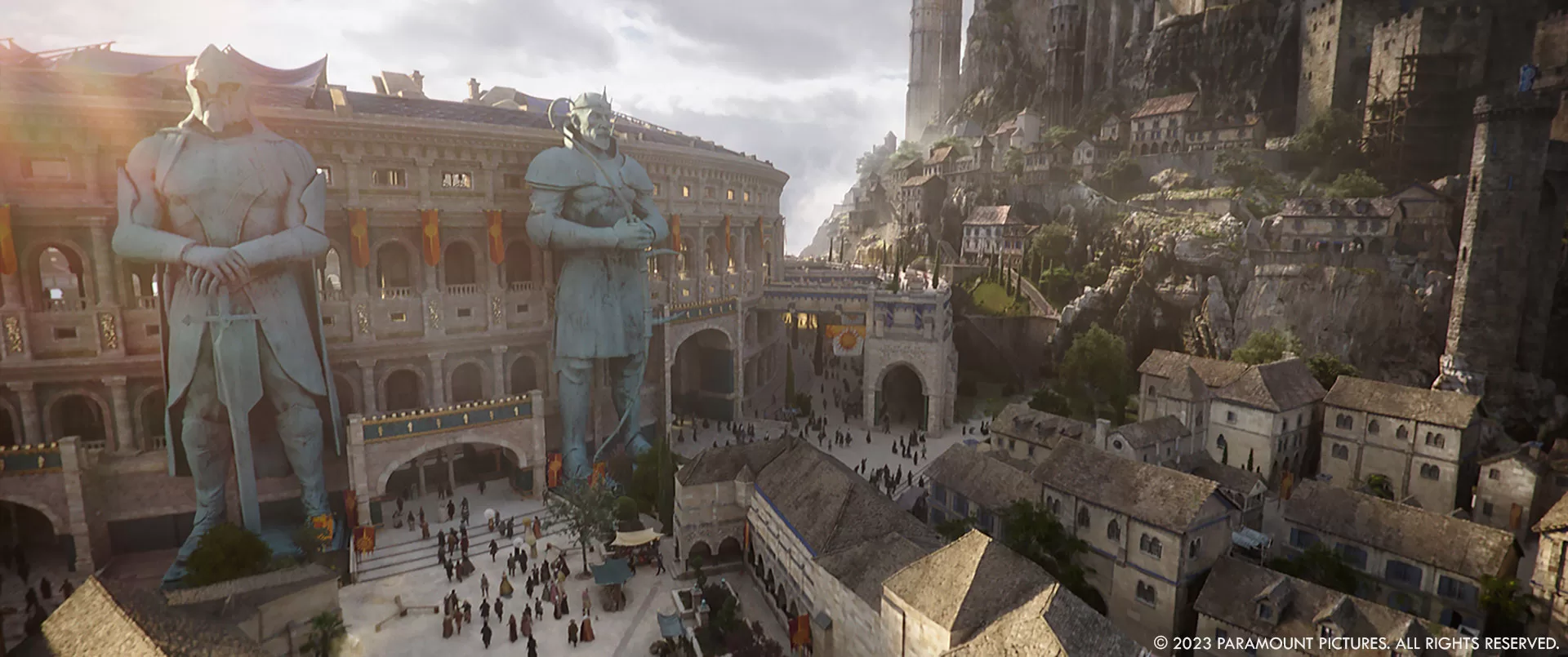
You have been working in the VFX for more than 25 years, what makes you still passionate about compositing?
I was thinking about this the other day. I started out doing rotoscoping and paint work. I quickly learned that compositing was something that I’ve always been interested in, even before I knew what compositing was. I loved watching optical effects from the 70s and 80s, trying to figure out how these pieces of film were put together. Seeing the telltale signs of an optical composite, be it competing film weave between elements, be it matte lines, and stuff like that. I mention these visual cues of optical compositing not because they’re “errors”, but because I used these visual clues to try to reverse engineer how the shots were actually composited on film. And I’ve always been fascinated with editing and the art of putting different pieces of footage together to elicit an emotional response. I still am to this day. And what I realized is that compositing is editing on a shot level. You’re taking these various different elements of a shot, blending them together, and then balancing them together to elicit an emotional reaction from the audience. And I just never get tired of it. There’s a challenge to doing the run of the mill shots, the straightforward “invisible effects shots”, which are “just” a split screen or just a blue screen, composited against another photographed background. There’s challenges in making that look seamless and photo real, and hopefully the audience will never know it. There’s also a challenge to creating fantastical environments, and situations that have never been photographed before. I’m talking about the far-out, science fiction, fantasy creatures and environments, and depicting them in a grounded reality that audiences will understand and emotionally believe. It’s all interesting to me. And I always want to have my hands dirty in the components, even on Dungeons and Dragons, where I was compositing supervisor, I still did a lot of shots. Nobody could stop me (laughs), I still had to have my hand in there because the day I stop compositing would be quite a sad day for me. To me, there’s still something very magical about taking those disparate angles that someone photographed, putting them together, and telling a story. I still love the process of animation, rotoscoping, shooting the plates, the photography, the environments; each on their own have elements of beauty and majesty. But compositing is the art of putting it all together, and it becomes far greater by more than the sum of its parts. And to me, that’s magic. I just adore the whole process.
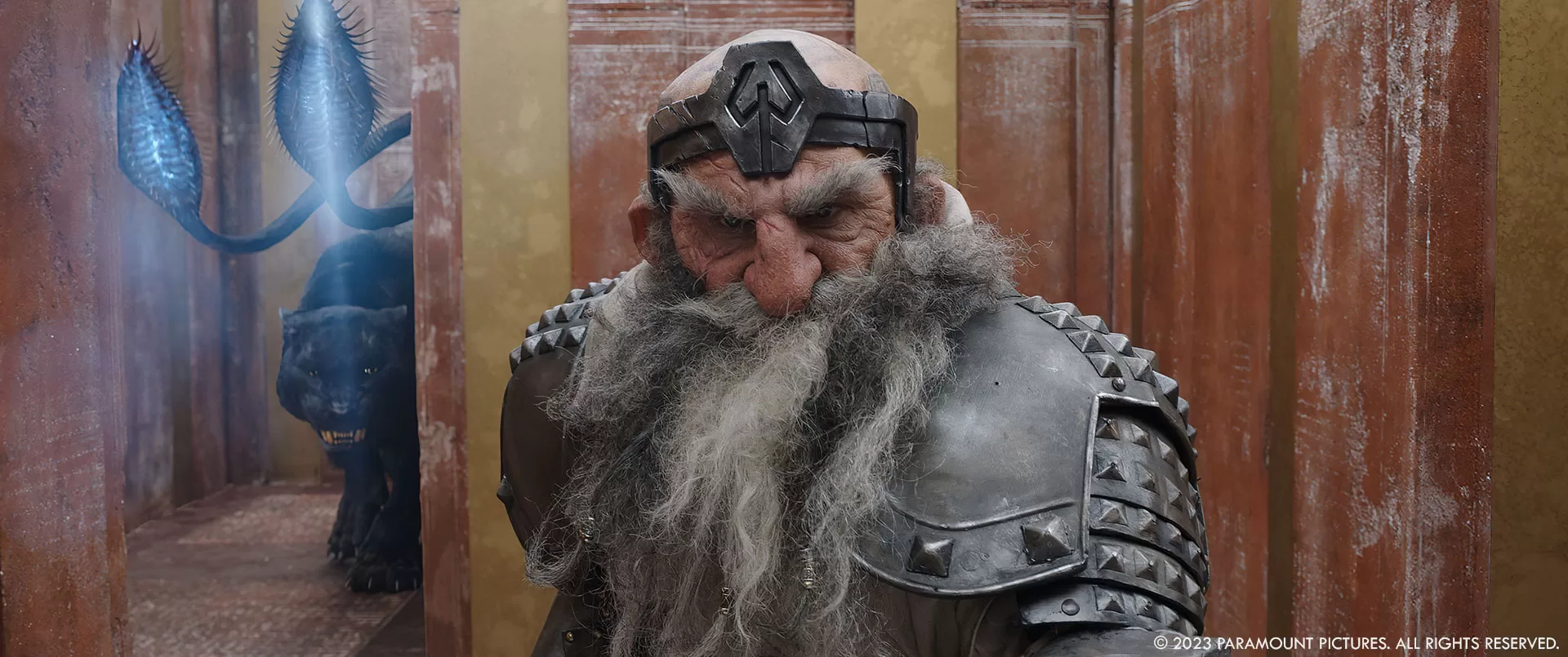
What was the most challenging shot to comp?
If there’s one thing that was different about this film, one thing that was exceptional about this show is that it was a plate-based show – meaning there was a lot of photography involved. Nearly every single shot of the movie has a photographic base. Even if we were going to end up replacing, let’s say 75% of the frame, the filmmakers and Ben still went up in helicopters and photographed establishing shots of environments that would eventually be mostly computer graphics. There would be shots of an actor on a dock in front of a harbor that we knew we were going to replace almost everything behind them. But it was filmed with the tone and lighting and the environment that the directors were going for which presents a really cool challenge for visual effects. You’ve already got this amazing photography, how do we put in our CG and synthetic environment? One sequence in the film depicts Simon putting on the helmet and trying to use the helmet to move his magic to the next level of understanding and knowledge. We call that the “ethereal plane sequence”, which has a long history in Dungeons and Dragons lore. But how would we present that in the movie, when he puts on the helmet and space changes for him? Everybody else is sort of frozen and breaking apart as he has a conversation with this amazing wizard that he doesn’t know, so it’s all very mysterious and abstract. And that was extremely challenging from both a compositing standpoint and from a design standpoint. The directors had a lot of ideas – they knew they wanted it to be otherworldly. It’s a case of the classic “do something we’ve never seen before”, which is always a challenging and terrifying prospect. And for that whole sequence, the actors playing Doric, Simon, and the wizard were photographed against a blue screen, supervised by Ben Snow. The sequence had to portray the feeling that they were still on that beach where the earlier part of the sequence takes place, but frozen in time and slowly breaking down, and as the sequence goes on, the world collapses in on itself, melding and blending together. There’s grass that’s growing out of control. Gravity is changing. But how do we present this otherworldly, abstract world and still have an extremely tactile, believable aspect to it? How do we balance that all together? So that was to me the biggest compositing challenge from my point of view. Raul Essig,our FX supervisor, and I did the whole sequence together, the two of us, and I think it turned out really well. We had some bizarre works in progress, where we went down many, many different paths. We ultimately leaned very heavily into the lava lamp metaphor, where the world was breaking down and then reconstituting itself in a different shape. But we worked very closely with Ben and the directors to try to nail what this is going to feel like. And I’m pretty happy with how it turned out. The sequence got some good laughs. And then we complement that later in the movie when he puts the on helmet again. This time, it’s a little bit more of a controlled environment. Our team in Sydney did that sequence. This time, Simon is more in control of the world, almost as if he’s figuring things out. And if you see the movie, he does figure things out. By the end of it, he has grown as a wizard. And it’s less chaotic than the previous sequence by design. Which was really fun to kind of do the complementary sequences, the same spirit with slightly different storytelling goals.
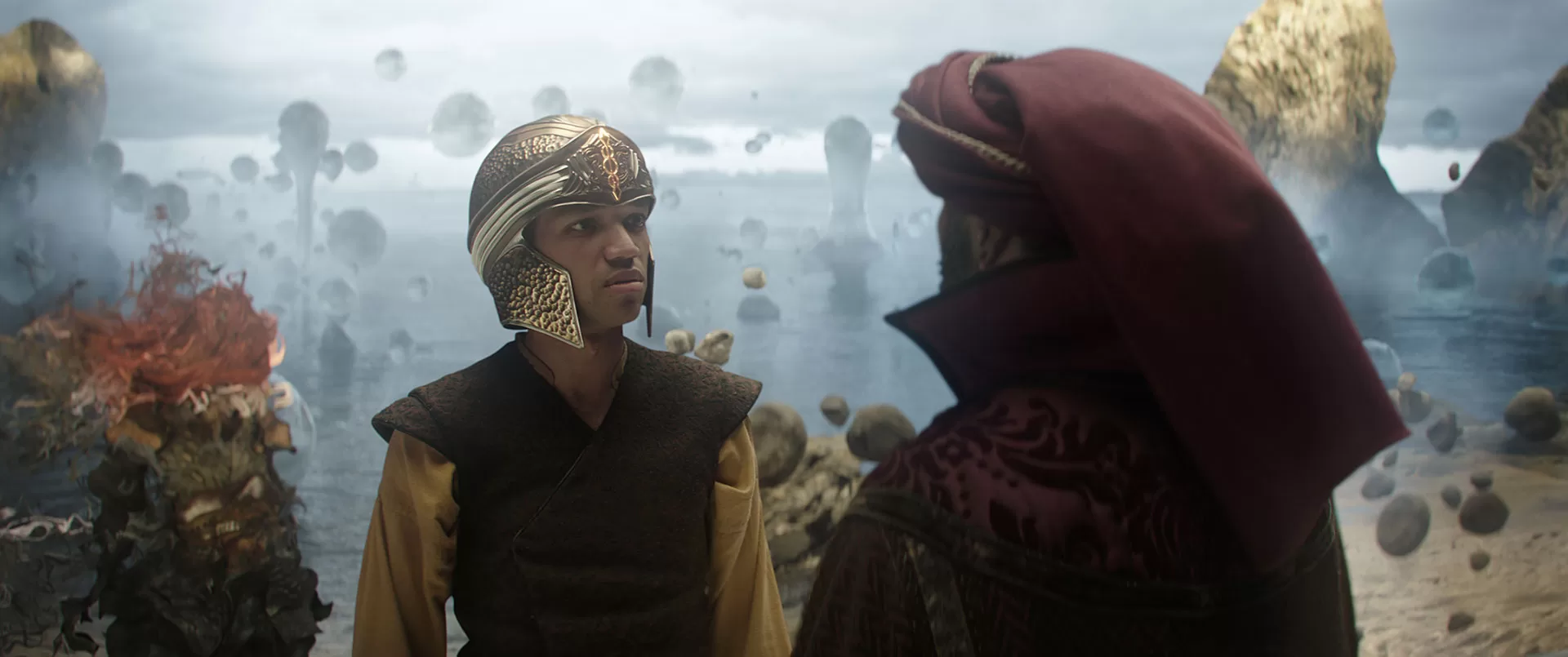
There are a lot of magic in the movie. How did you help to design these magical effects on the compositing side?
With a fantasy movie with a lot of magical spells, it’s a design challenge, particularly when the directors wanted to have that tactile feeling to the spells, as if you could almost reach out and touch them. Magical spells are terrifying, you can use lots of fanciful light effects and fairy dust and other worldly effects to get your point across, but that’s not tactile and plausible for a film like this. So very quickly, we realized that every spell that a performer invokes has to have a strong metaphor for them from the real world. I’ll point out one in particular, Simon, when they’re trying to get away from the castle and they’re in the boat, and Hugh Grant is on the dock. He quickly whips up his water spell. In order to telegraph to the audience exactly what kind of spell he was conjuring, we relied on creating mist and water droplets. If the audience can register that it’s mist and water droplets and not dust, twinkles, or heat distortion,we can cut to the giant wave that we created to knock over Hugh Grant, then push the boat away, and the audience is going to instantaneously know what the plan was. That’s the goal. And so it took a lot of experimentation on how to sell that very quickly in such a short amount of time. How watery is too watery and how misty is too misty. Should water be dripping off at his fingertips? Should it be flinging all around? Is that too chaotic? If water is coming out of his fingertips, will it look like sweat? Will it look like he dipped his hands in the water and flung them back out? All of those things are stuff that we’re trying to be cognizant of, and hit that right balance that the directors were looking for. And I think it turned out pretty well.
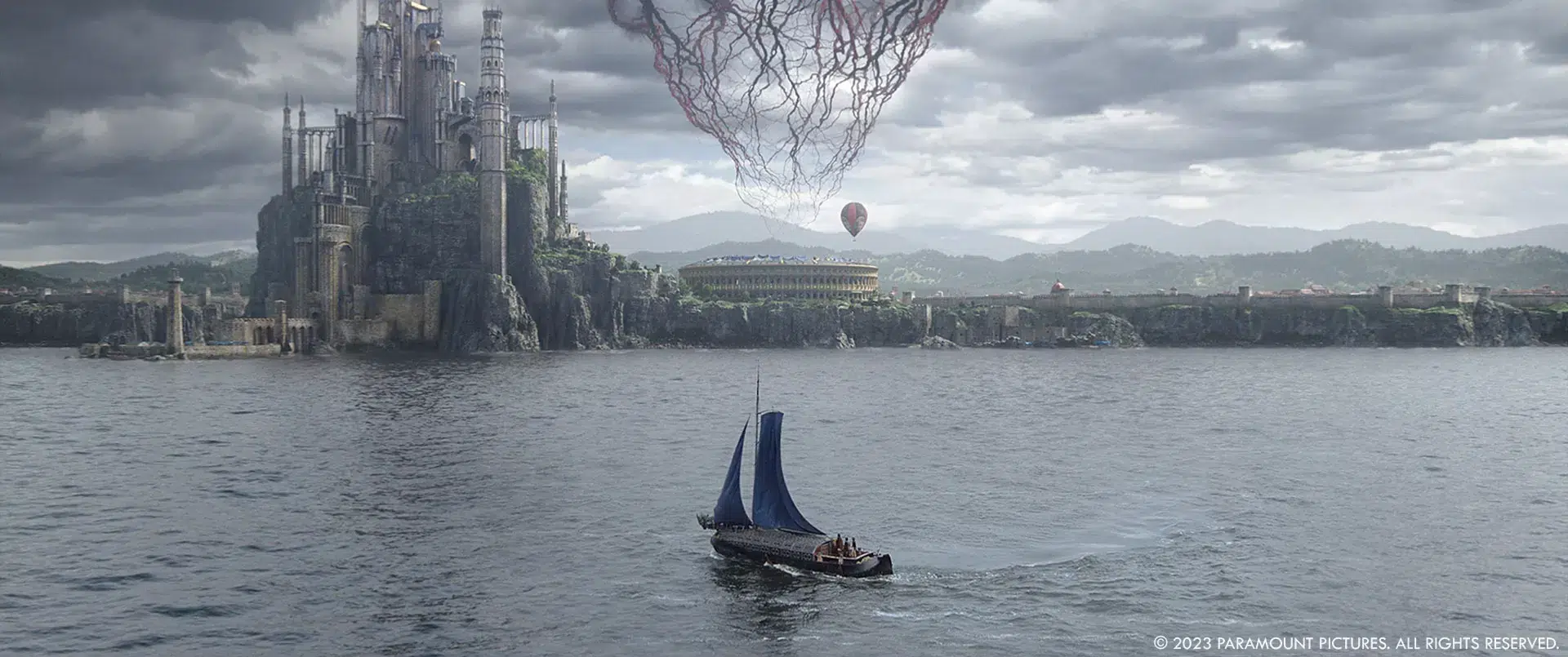
What was the most fun stuff to do on this show?
Oh, one of the most fun things about this movie is that it absolutely has a sense of humor. And there’s an element of whimsy, even when the film veers into high stakes and moments of tension. The movie has a twinkle in its eye and we were hoping the audience would feel like this movie has the attitude of a fun 1980s romp. So, in all of our sequences, we were cognizant of that style. One sequence that always got laughs in dailies was the Owlbear and Sofina battle at the end of the movie. It’s a computer graphics version of Sofina, battling the computer graphics version of owlbear. And the finishing touches of that sequence, where the owlbear is just destroying Sofina – every single time it came up in dailies, it got a great laugh. Kevin Martel and his animation team here at ILM did an amazing job of illustrating and trying to telegraph the weight and the forces involved, while still being funny and definitive. One thing I want to point out is the terrific marriage of clever blocking on set and digital visual effects – it’s one of those last shots of the Owlbear/Sofina fight when Owlbear throws Sofina against the side of the castle. You’re watching Sofina hit the wall, land on the ground, and then additional bits of debris fall on her. Scott Benza and Kevin Martel had such a ball directing and animating that sequence that you don’t even notice that a certain bit of magic happens in the shot. While all of that amazing stuff happened on screen, no one noticed that Owlbear stepped out of the frame, and then before you realize it, Sofina appears in frame again fully transformed into her humanoid self. And it’s just so pleasing. And nobody feels robbed of that transformation moment. If you look at the shot, it seemed so effortless but it actually required the intense planning and coordination of the entire crew.
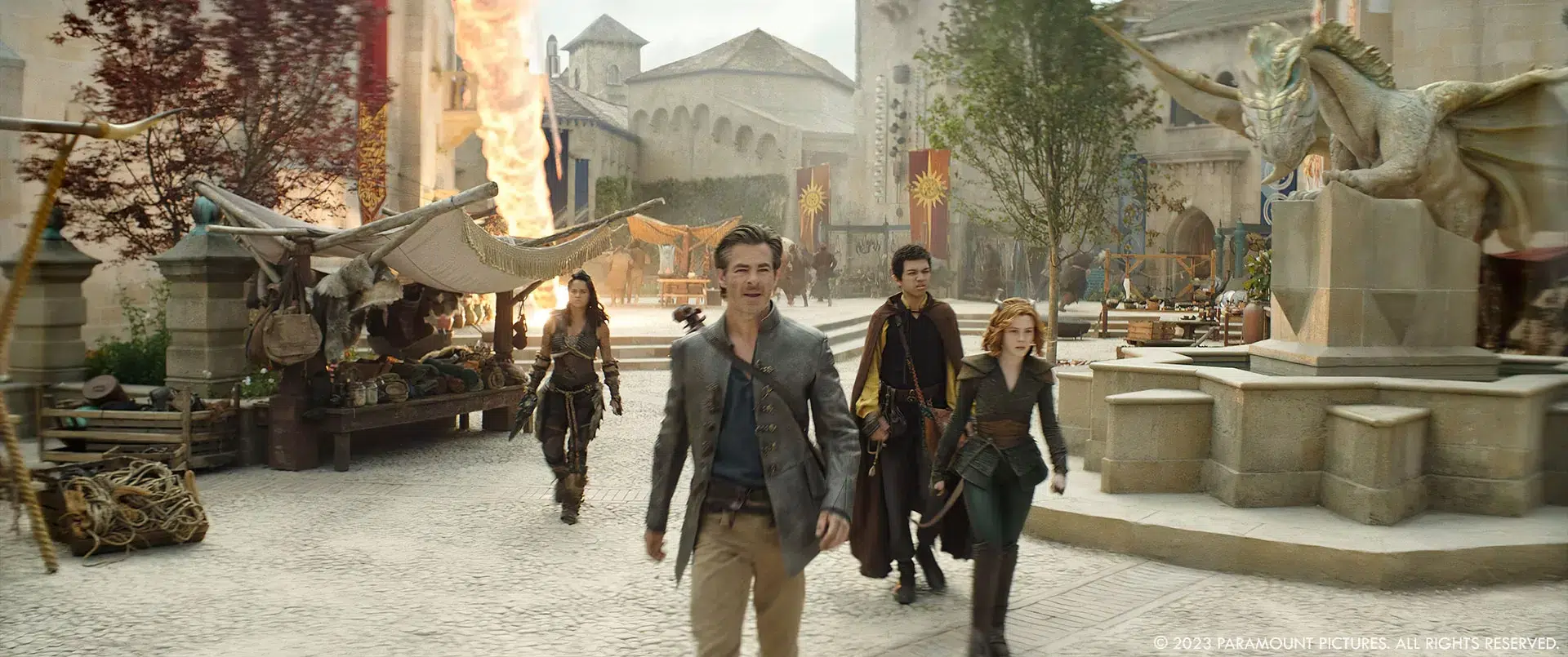
I’ll also mention another transformation that Doric does at the beginning of the movie, when we first are introduced to her when she’s disguised as a horse and turns into the Owlbear. And then later in the sequence as an Owlbear jumps onto a horse—and mid jump—lands on another horse to get away but turns into Doric as a humanoid figure.The shot was cleverly designed so that actress Sophia Lillis could land on the horse while the camera orbits around her. The transformation from Owlbear to humanoid would only happen over the course of a few frames as she landed on the horse, and as the camera orbits around the horse, the head of the horse acts almost as a foreground element “wiping” away the Owlbear and revealing Sophia. In a way, we’re telegraphing an old-school technique (using a foreground element to hide the transformation) in the middle of this huge digital transformation. Some fun movie magic there. The camera continues to orbit around and now here’s an example of some invisible visual effects that we do throughout the entire movie. She has her sling shot in her hands, and aiming at her target – it’s a very heroic moment. In the edit, the directors realized there’s too long of a pause before she fires the slingshot. They wanted to keep the energy high in the shot, and have her fire the slingshot a beat earlier than she did in the photography. And this is all during the camera move! So I had to take her performance from later in the shot, and move it way earlier in the shot. And with the camera moving and her performance slightly changing throughout the move, it turned out to be really tricky. Trevor Hazel, the roto paint supervisor and I, worked really closely on that because it required a lot of paint outs, a lot of rotoscoping, some morphing, and some little bit of trickery to get it working correctly. Hopefully, nobody thinks about it at all. And it’s just a single fluid motion, the entire shot from beginning to end. That kind of stuff is just a blast and so much fun. There’s a lot of really cool magic tricks that we use, even old-fashioned magic tricks that we still rely on to confuse the eye, that the audience doesn’t know that a magic trick has happened at all. So that was super fun. And thank you for indulging me in that story.
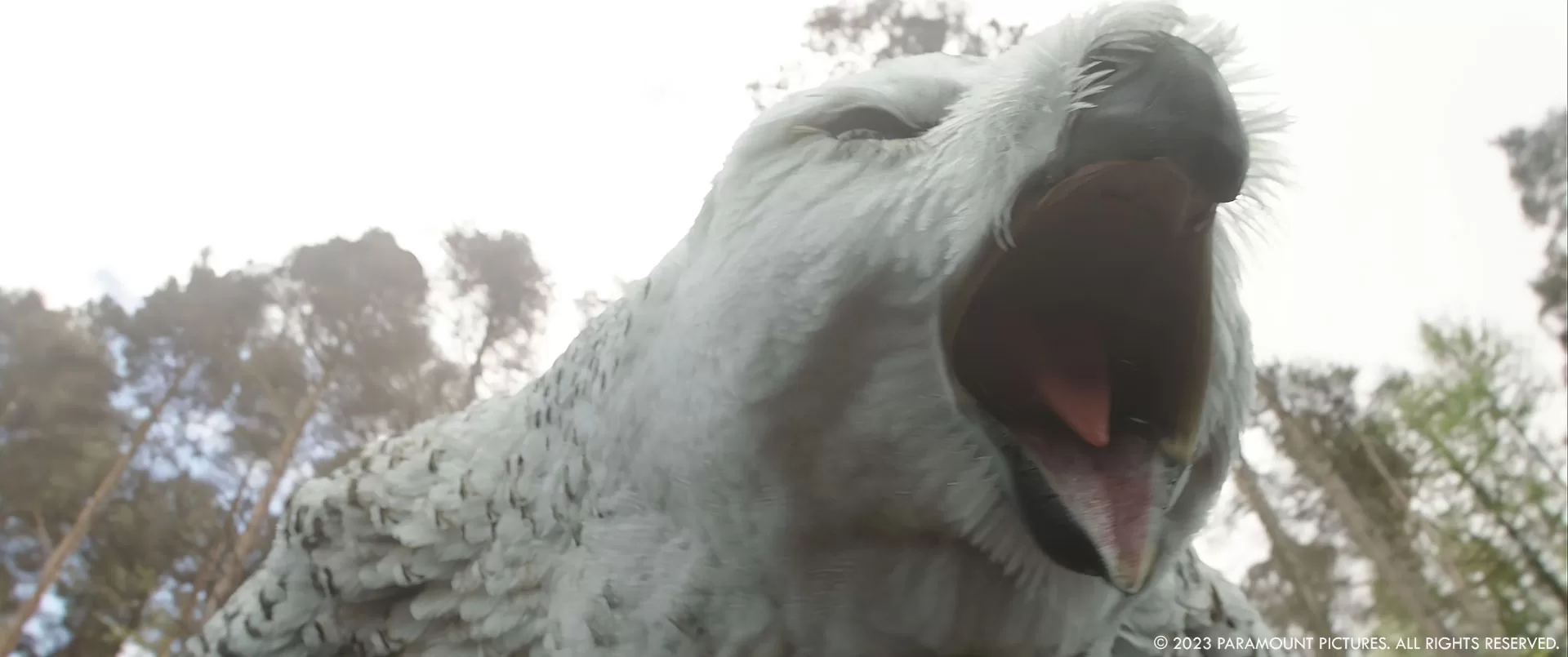
What was your best memory on this show?
I would say one of the things that I’m really proud of is not only the work, but the relationship Ben Snow and ILM developed with the directors, in general. John and Jonathan have directed projects with visual effects before but never at this scale. I mean, there were over 1300 visual effects shots in this movie. So there was a bit of a learning curve on their part to understand what was possible and feasible, so the relationship between Ben,the directors, and ILM was incredibly strong and evolved really quickly. They developed a really good instinct about the questions to ask to direct great visual effects. By the end of the show, you would never guess that this was their first big visual effects production. They knew what to ask for. They knew how to film things, they knew how to get the biggest bang for your buck, and what to focus on for a particular shot when directing it. So their comfort level and their expertise in visual effects grew throughout the production – it’s something that we all want to have happen. The goal should be that we’re all on the same page by the end of the project, and we’re all speaking the same language. So that’s something I’m very proud of.
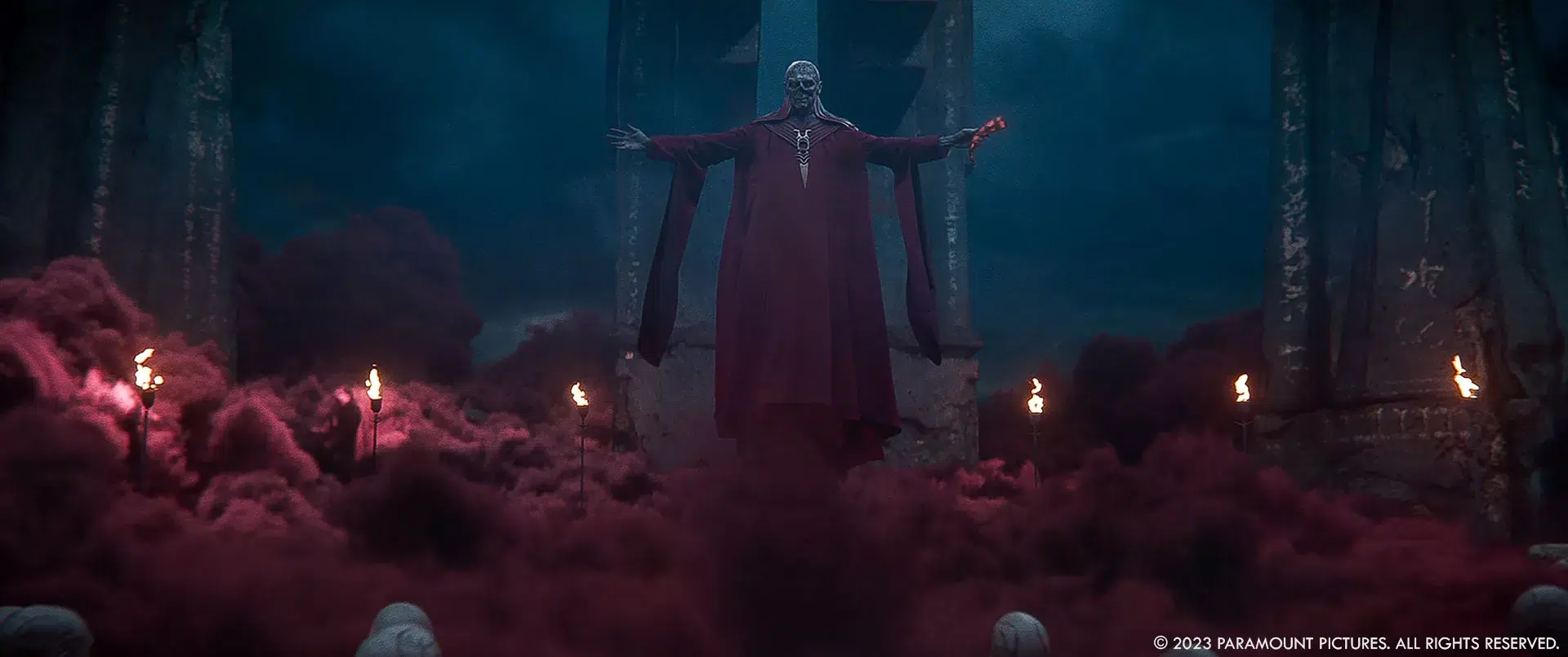
What was the shot count?
The overall picture had 1332 shots.
How long did you work on it?
ILM started shot production in March 2021,I joined in Spring of 2021, and then we wrapped by the end of Summer 2022. So it was over a year for me.
Thanks a lot for your time!
WANT TO KNOW MORE?
ILM: Dedicated page about Dungeons & Dragons – Honor Among Thieves on ILM website.
© Vincent Frei – The Art of VFX – 2023




